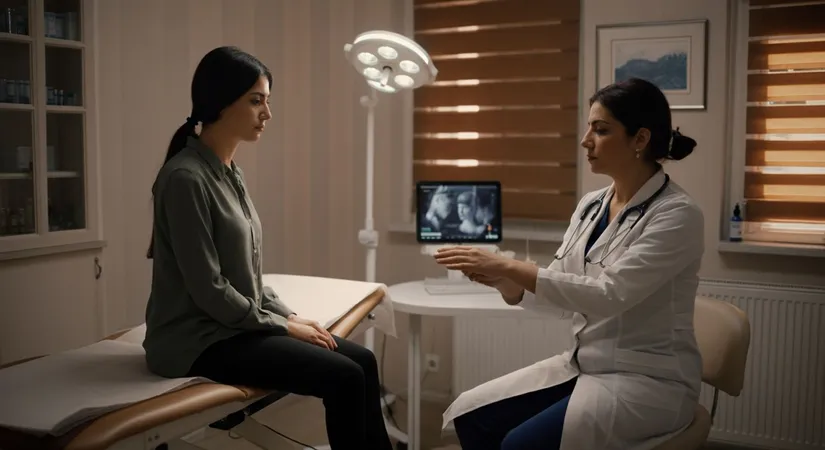Mastering Migraine Relief: Unveiling Pressure Point Secrets
Discover the power of pressure points for effective migraine relief. Unlock natural, lasting relief with these proven techniques.
Migraines are debilitating headaches often accompanied by nausea, vomiting, and extreme sensitivity to light and sound. For many sufferers, finding relief from migraine discomfort can seem elusive. However, there is an ancient technique known to provide significant relief: Pressure point therapy. This method involves manipulating specific points on the body to alleviate pain and reduce migraine frequency. Over the centuries, pressure point therapy has become a recognized natural remedy for migraines, widely embraced as it offers a drug-free alternative to reduce headache pain. In this comprehensive guide, we delve into how you can leverage pressure points to manage migraines more effectively. We'll explore the science behind these techniques, how to apply them, and seasonal strategies for maximizing their benefits.
Understanding Migraine Pressure Points: A Comprehensive Guide
Exploring the Benefits of Migraine Pressure Points
Pressure point therapy offers a natural approach to managing migraines, focusing on specific areas of the body to alleviate pain. By stimulating these points, individuals can experience significant relief from migraine symptoms. This method is particularly appealing for those seeking alternatives to medication.- LI4 (Hegu): Known for its effectiveness in reducing headache pain, this point is located between the thumb and forefinger.
- GB20 (Feng Chi): Found at the base of the skull, it helps improve blood circulation and ease tension, crucial for migraine relief.
- ST36 (Zu San Li): Positioned near the shin, it aids in digestion and energy balance, indirectly affecting head pain relief.
Steps to Utilize Pressure Points for Migraine Relief
Understanding how to effectively use pressure points can enhance their benefits. Here’s a simple guide to help you get started:- Identify the pressure point: Familiarize yourself with the location of key points like LI4, GB20, and ST36.
- Apply gentle pressure: Use your fingers to apply steady pressure on the identified point for about 30 seconds to a minute.
- Repeat as needed: You can perform this technique several times a day to manage migraine symptoms effectively.

How to Use Pressure Points for Migraine Relief: Step-by-Step Techniques
Effective Techniques for Stimulating Migraine Pressure Points
Employing pressure point techniques for migraine relief requires an understanding of where these points are located and how to stimulate them effectively. Here's a step-by-step guide:- Locate the Pressure Points: Begin by identifying the pressure points on your body that are most frequently associated with migraine relief, such as LI4, GB20, and ST36.
- Apply Pressure: Using firm, gentle pressure from your fingers or a soft object, press on each point. Apply a consistent pressure that is firm yet comfortable; do not press too hard, as this can cause additional tension.
- Massage in Circular Motions: With the point located, gently massage in small, circular motions, maintaining a constant pressure. This motion enhances circulation and can amplify the relief felt from each point.
Additional Tips for Maximizing Relief
- Breathe Deeply and Relax: While administering pressure, focus on deep breathing to aid relaxation. Slow, deep breaths can help ease tension around the headache.
- Stick to a Routine: For best results, incorporate these techniques regularly, especially during the onset of migraine.
- Monitor Your Progress: Keep track of how your body responds to these techniques to adjust your approach for optimal relief.

Exploring Acupressure for Headaches: Natural Techniques for Relief
Understanding Key Acupressure Points for Migraine Relief
Acupressure offers a natural and accessible method for alleviating headache pain, including migraines. This ancient practice focuses on applying manual pressure to specific points on the body, which can be easily practiced at home. Two effective acupressure points for migraine relief are BL2 (Zan Zhu) and Tai Yang.- BL2 (Zan Zhu): Located near the inner edge of the eyebrows, this point is particularly beneficial for frontal headaches.
- Tai Yang: Situated in the temples, it is especially useful for providing relief during migraines.
- GV20 (Baihui): Found at the top of the head, it helps in reducing tension and promoting relaxation.
Integrating Acupressure with Relaxation Techniques
Combining acupressure with relaxation activities can enhance its effectiveness in managing migraines. Here’s how you can integrate these practices:- Begin with Meditation: Start your acupressure session with a few minutes of meditation to calm the mind and body.
- Apply Pressure: Use your fingertips to apply gentle pressure on the identified acupressure points, maintaining a steady hold for about one minute.
- Incorporate Yoga: Follow up with gentle yoga stretches to further relieve tension and improve circulation.
Seasonal Strategies: Pressure Points for Winter Migraines
Adapting Pressure Point Techniques for Winter
Winter can intensify migraine symptoms due to factors like air pressure changes, less sunlight, and increased indoor heating. Adapting your pressure point therapy to these seasonal changes is essential for effective migraine management.- GB20 (Feng Chi): Located at the base of the skull, this point helps alleviate tension headaches exacerbated by cold weather.
- LI4 (Hegu): Found between the thumb and forefinger, it combats dryness and tension caused by indoor heating.
- ST36 (Zu San Li): Near the shin, this point supports overall energy balance, crucial during the low-energy winter months.
Steps to Enhance Winter Migraine Relief
To maximize the effectiveness of pressure point therapy during winter, consider these steps:- Stay Hydrated: Drink warm herbal teas to maintain hydration and promote relaxation.
- Manage Stress: Incorporate stress-reducing activities like meditation alongside pressure point therapy.
- Adjust Techniques: Tailor pressure application to address specific winter-related migraine triggers.
Pressure Point Therapy: A Natural Approach to Migraine Relief
Seasonal Adaptation of Pressure Point Techniques for Winter Migraines
Frequently Asked Questions
What are the benefits of using pressure points for migraine relief?
How do I apply pressure points for effective migraine relief?
Can acupressure for headaches be combined with other relaxation techniques?
How can I adapt pressure point techniques for winter migraines?
Discover the Path to "Healthy Beauty" with estethica's Expert Care!
📞 Call Now for Your Free Consultation!